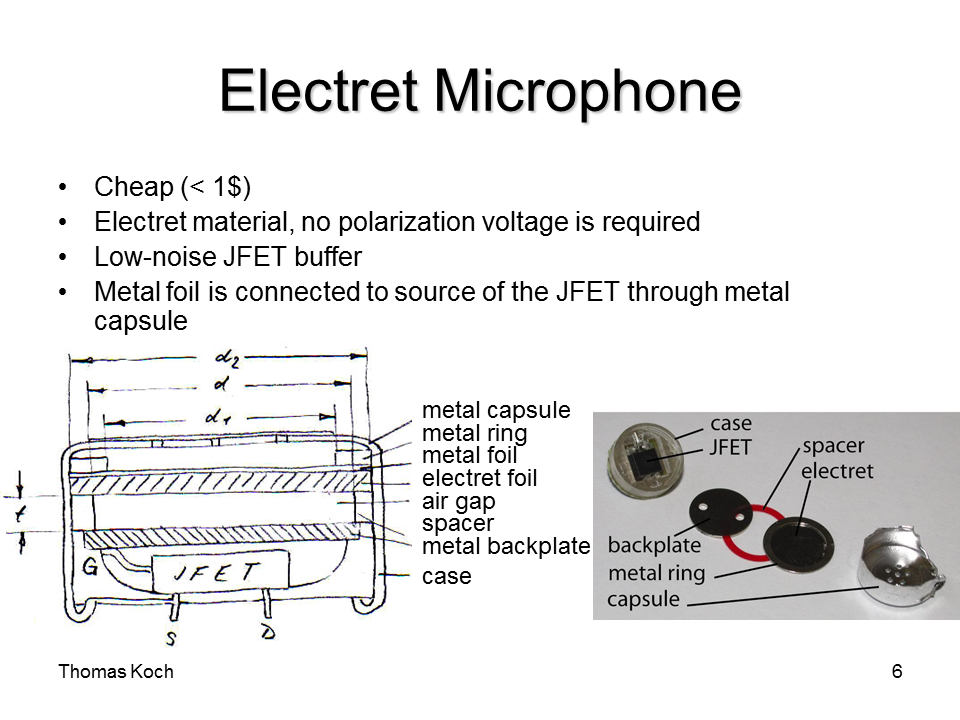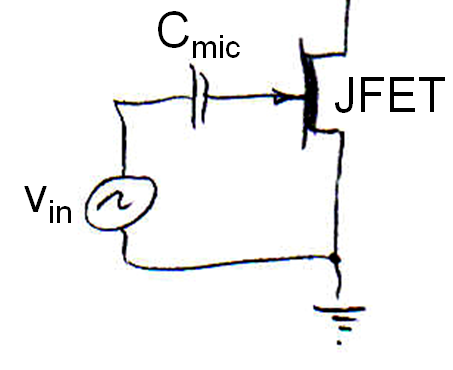This is an old revision of the document!
Microphones and microphone preamplifier
You will use in lab_3 the most common type of microphone: the electret microphone (see this paper from the inventor, G.M. Sessler, 1963). The foil electret uses a permanently-charged foil which vibrates when sound hits it. The movement of the charge creates a voltage. It's trickier than you might think so see the paper if you want to understand the electrostatics. You may also want to look at the part of the master's thesis from Thomas Koch on an integrated microphone preamplifier circuit. These microphones almost always include a JFET transistor. The n-channel JFET transistor reduces the output impedance and can also be used to form a first voltage gain stage - or it can just serve as a unity-gain buffer. Electret microphones usually cost <1$. The two wires to the electret are the drain and source of the JFET; the source is connected to the electret foil and the gate is tied inside the microphone capsule to the opposite plate from the electret foil, where it adjusts itself to an equilibrium voltage such that the net current onto the gate is zero. Microphones are rated in part by the JFET DC current, e.g. 2mA. Sound modulates this current slightly. You can build a very basic microphone preamplifier by simply hooking up the microphone to either a pullup resistor or to a source-follower resistor (see below). Either way, your microphone output signals will have a maximum amplitudes of only tens of mV. This rather small signal means that usually you need another preamplifier to make the signal larger before conversion; however here let's just start with the simplest preamplifier consisting of a single resistor. The small signals will expose the problems in trying to convert (digitize) small signals which sit at a large DC voltage. For example, if you use the ADC in 8 bit mode with the ADC reference voltage at 3.3V, then your levels are separated by 3.3V/255=13mV, so you will barely be able to observe a loud sound. The resolution with 10 bit conversion will only be theoretically 4 times smaller, or about 3mV, but remember the ADCs 10 bit mode has a differential non-linearity - check the AVR32 datasheet.


